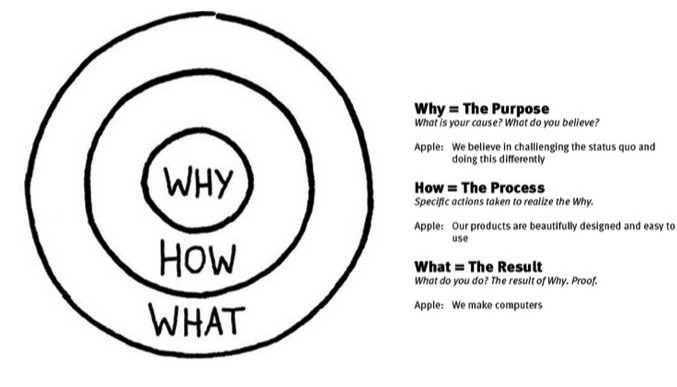This four-part blog series explores the method and impact of Project Based Learning (PBL), an approach that Sycol encourages within its educational organisations.
Image copyright attributed to Simon Sinek
Part 1
The REAL Projects initiative grew out of Learning Futures. Learning Futures was a four-year programme, funded by The Paul Hamlyn Foundation and supported by the Innovation Unit (IU), which sought to develop new approaches to learning that could transform learner engagement.
The foundation of this programme included leveraging some of the most advanced and interesting education best practices from around the world and incorporating expertise from those that seemed to offer the most promise.
As part of this research effort, a group comprised of Innovation Unit personnel and leaders from schools went to High Tech High in San Diego, California in 2011 for a week-long study visit. Having searched the world for schools that embedded the most effective evidence-informed pedagogies, High Tech was the one that seemed to offer the most profound promise.
Educators from around the world regularly visit High Tech High for week-long or even year-long training experiences. Following its study visit, IU proposed taking that one step further. They formed an alliance with High Tech to hire two High Tech High teachers to do a secondment in the UK for a year, and also to co-write a manual to support schools in the UK – which became ‘Work That Matters: A Teacher’s Guide to Project-Based Learning’. The aim was to conduct a two year controlled study in partnership with the Education Endowment Fund and Durham University to determine if the pedagogies that had been so successful at High Tech would be as effective here in the UK.
After a one-year pilot programme with half a dozen schools to solidify the REAL Project approaches, materials and school support strategies, a controlled study was introduced in year two with two new High Tech High coaches (and was expanded to four teachers in year three). Twenty-four schools signed on — 12 of which became trial schools while the remaining 12 served as control schools. At the end of the trial, both groups were tested for 21st century skills and literacy. All schools who were chosen for the trial received intensive, year-long coaching from both a High Tech High teacher and an experienced school leader from the United Kingdom.
I was lucky enough to be one of the High Tech High teachers chosen to come to the UK as a coach at the start of the trial. What began as a one-year contract has extended into three years of rewarding work. During my tenure in the UK, I’ve worked with approximately 30 different schools from Newcastle to Cornwall. Some of those schools have attained new heights of success with REAL Projects while others have struggled.
What has separated the success stories from the struggles?
Innovation Unit recently partnered with Eos to implement REAL Projects in primary schools. One of Eos’s grounding texts is the book Start With Why by Simon Sinek. I’ve just read the book myself, and it provides a perfect framework as to what the successful schools have in common.
Sinek’s book revolves around what he calls ‘The Golden Circle’. This blog is an attempt to outline how Innovation Unit defines the elements of The Golden Circle for REAL Projects as a whole, and how successful schools have defined those same elements within their own context.
Read the other blogs in this series:
Blog 2. What Makes REAL Projects Golden: The Why
Blog 3. What Makes REAL Projects Golden: The How
Blog 4. What Makes REAL Projects Golden: The What
Image copyright attributed to Simon Sinek


